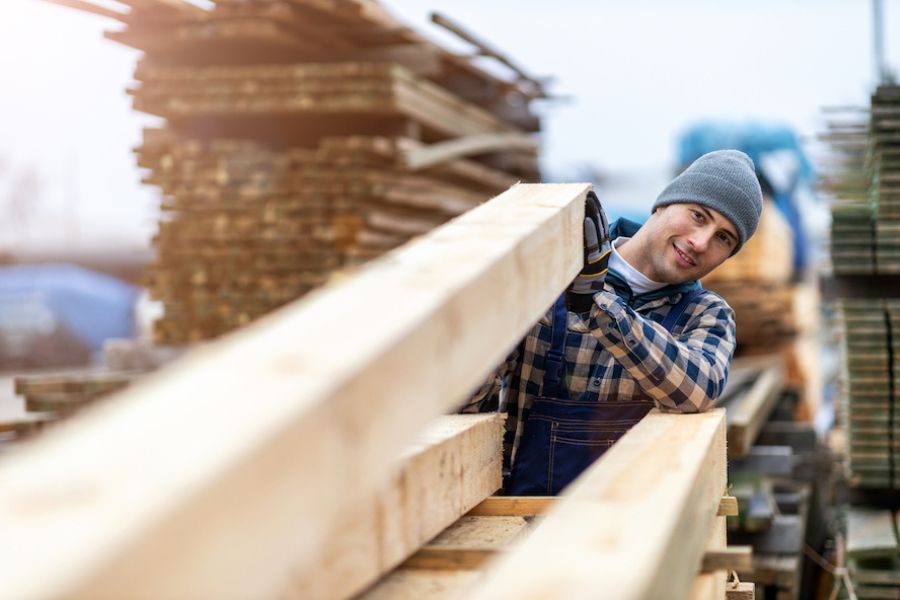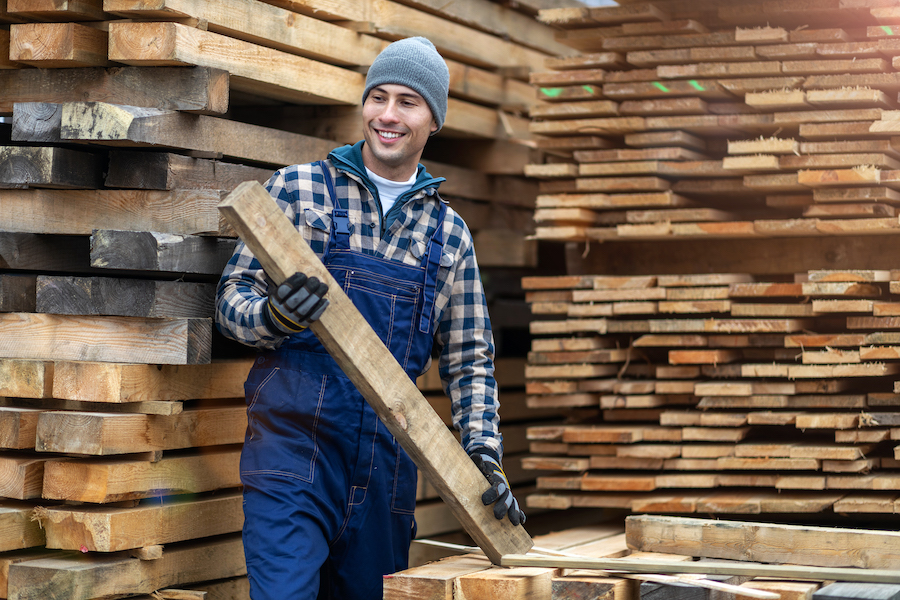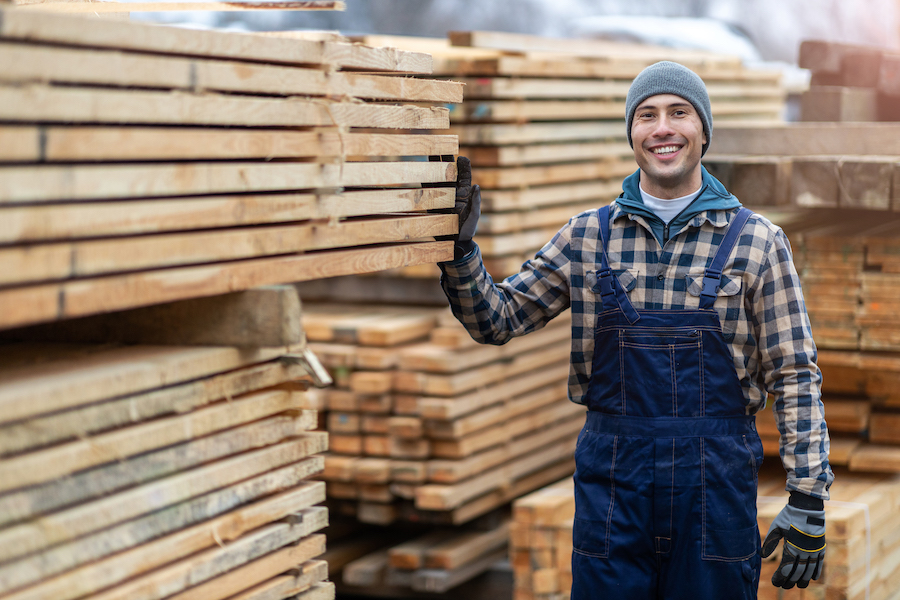
What You Need to Know to Pick the Best Wood for Outdoor Projects
With winter just around the corner, it might seem like a weird time to be talking about how to pick the best wood for outdoor projects.
If you want to build a deck or some sort of outdoor furniture, for instance, it’s probably not going to take place until spring at the earliest.
But no matter what you’re planning on building, if you want an outdoor project to successfully come to fruition, it’s going to require careful consideration and planning.
With that in mind, we figured now was a great time to offer some advice on how to choose the best wood for outdoor projects, so you’ll have the entire winter to mull it over and make your decision.
So, if you’re searching for the best wood to build outdoor furniture, the best wood for a deck, or something else entirely, then you should definitely keep reading.
Because in this article, we’re going to tell you everything you need to know to pick the best wood for outdoor projects, no matter what you’re looking to build.
Why Is it So Important to Pick the Best Wood for Outdoor Projects?

Regardless of what outdoor project you’re planning, choosing a good wood for outdoor use is incredibly important, as it can significantly influence the longevity, durability, and overall performance of any outdoor structure or furniture.
For one thing, outdoor projects are constantly exposed to the elements, such as sunlight, rain, humidity, and temperature fluctuations, and if you use the wrong wood, whatever you build can end up decaying, warping, cracking, or fading, leading to premature deterioration and structural weakness.
At the same time, outdoor furniture or structures will inevitably endure heavy wear and tear, whether it’s a deck supporting foot traffic, garden furniture enduring weight, or fencing bearing the brunt of wind and weather.
Moreover, the aesthetic appeal of outdoor woodwork also matters, and choosing the best-suited wood will help to ensure things continue to look great despite being exposed to the elements.
All things considered, choosing the best wood for outdoor projects is critical to ensure whatever you’re looking to build will withstand environmental challenges, require minimal maintenance, last for a long time, and retain its beauty and functionality.
How to Pick the Best Wood for Outdoor Projects

If you want to build something that’s going to stay outside, you’ve got to carefully consider the kind of wood you’re going to use.
With that in mind, the following tips will help you make sure you’ll be able to create something with exceptional longevity, durability, and resistance to environmental elements.
Understand Outdoor Wood Characteristics
Before looking into the types of wood you might want to use, it’s vital that you understand the essential qualities required for wood that’s going to remain outdoors, including:
Durability: If you want whatever you’re building to be tough enough to last a long time, make sure to choose wood species with inherent durability against decay, rot, and insect damage.
Stability: Another important thing to remember is that you’re going to want to choose wood that can maintain its dimensional stability, which will allow it to resist warping, splitting, or cracking.
Weather Resistance: Regardless of where you’re located or what you’re building, ideally you should opt for wood that’s capable of withstanding things like moisture, sunlight, and temperature fluctuations, and this is even more important when you live in a harsh climate, as most of us do in Canada.
Choose Resilient Wood Species
There are several species of wood that tend to excel in outdoor environments due to their natural resistance to decay and insects, including:
Cedar: Western red cedar stands out for its natural oils, which help to protect against decay and insects. It’s also lightweight, easy to work with, and offers a charming reddish-brown hue.
Redwood: Known for its durability and stability, redwood contains natural tannins and oils that make it resistant to decay and insects, as well. It boasts a beautiful reddish hue and is ideal for decks and outdoor furniture.
Tropical Hardwoods: Species like teak, Ipe, and mahogany possess exceptional durability and resistance to decay and insects. That being said, they are more expensive, but their longevity makes them one of the best choices for any outdoor project.
Consider Maintenance Requirements
Something else you’re going to want to think about is what kind of maintenance efforts will be required to keep the wood you’re using in the best possible condition.
Some woods, like cedar and redwood, tend to age gracefully and require minimal maintenance.
But some other types of wood, like tropical hardwoods, will maintain their appearance with regular oiling, but will also weather naturally if they’re left untreated.
Evaluate Cost and Budget
Different wood species will vary in terms of their cost, which will depend on availability, demand, wood species and quality, and even things like geopolitical issues and environmental factors.
That being said, make sure to consider the scale of your project, the type of wood you want to use, and what kind of budget you’re working with.
If you’re looking for a budget-friendly option, pressure-treated pine is economical and treated to resist decay and insects. But keep in mind that it requires regular maintenance and might not match the aesthetics of other woods.
Assess Aesthetic Preferences
The kind of wood you choose will have a significant effect on the appearance of whatever it is you’re building, so make sure to take some time to figure out exactly how you want things to look.
With that in mind, remember that some woods have distinct colours and grain patterns that can contribute to the visual appeal of whatever you want to create.
Redwood and cedar feature warm tones, for instance, while tropical hardwoods display rich, exotic grains.
Determine the Wood’s Suitability
Different outdoor projects require specific wood properties, which means some woods may not be suitable for what you want to build, no matter how much you like their look.
Here’s some advice on the kinds of wood that are typically best for the outdoors:
Decks: When you’re building a deck, you want to choose a wood that has a natural resistance to moisture and decay, like cedar, redwood, tropical hardwoods, or pressure-treated pine. You should also make sure that the wood is treated for direct ground contact, if applicable.
Outdoor Furniture: Outdoor furniture requires wood that’s known for its durability, stability, and structural integrity, such as cedar, redwood, teak, white oak, Ipe, acacia, eucalyptus, or tropical hardwoods.
Fencing and Structures: When building structural components, like fencing, you’re going to want to choose wood that’s resilient to weather and insect damage, like cedar, redwood, Douglas fir, or pressure-treated pine.
Think About Wood Treatment Options
Some woods may benefit from treatments or finishes that can enhance their durability or appearance, so this is something else you might want to think about.
Applying appropriate sealants or finishes can help to extend the wood’s lifespan and maintain its appearance, but you should try to use oil-based finishes for woods like teak or Ipe, which will help to preserve their natural colour.
Seek Professional Advice
There’s no shame in asking for advice on picking the best wood for outdoor projects, especially if carpentry isn’t your strong suit.
That being said, you might want to consult with local woodworkers, suppliers, or even a carpenter in Kelowna (if you’re in our neck of the woods) for guidance on which types of wood are suitable for your project’s specific requirements and best suited to the weather and climate in your area.
Are you looking for the best custom woodworking Kelowna has to offer? Our master woodworker, Andy Ingram, has over 30 years of experience, and he can bring practically any idea into reality. For more details, contact us, or check out our portfolio to see what we’re capable of creating.